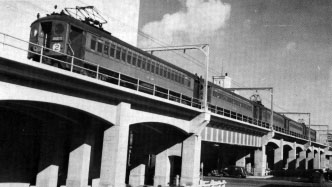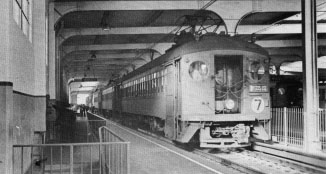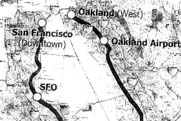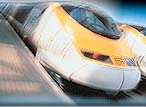The tracks carried more people than all the auto lanes
COMBINED. Yet, the tracks used only 20% of the bridge
area.
A 1947 California
Department of Public Works report shows the San
Francisco-Oakland Bay Bridge configuration (1939-1958,
right) with five peak direction lanes and two tracks. It
states:
"Electric interurban railways have
a greater capacity and offer safer and faster transportation
(particularly during rush hours) than do other forms of
transportation. Therefore, it is essential that the electric
railways be retained on the present bridge."
|
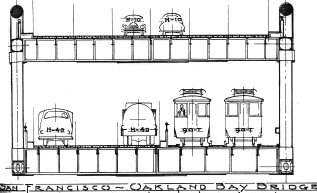
Configuration from the 1947 State
Report (above) [enlarge]
and possibility for the future
(below) along with earthquake retrofitting.
|
Retaining the existing steel bridge with retrofitting is
the best and least
costly alternative. Tracks can be easily restored in the
future. The number of peak direction lanes would remain
unchanged at five lanes, as it always was even with trains.
A bicycle path should be attached.
|

|
The tracks on the bridge had greater capacity than BART
does today because the trains had six parallel tracks to go
to for unloading/loading. There is room enough for high
speed trains.
|

|
Train passengers helped pay for the bridge! The toll was
2.5 cents per passenger each way, included in the fare. This
is equivalent to about 50 cents round trip today. It is a
significant amount because it's per passenger (not per
car).
|
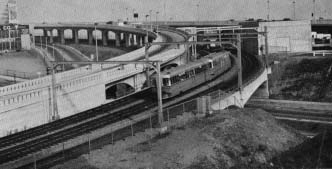
|
|
The A-trains of the Key
System (shown) went between San Francisco and San
Leandro. The Oakland traffic engineering department wanted
trains eliminated near Lake Merritt so the right of way of
the trains could be used for more automobile lanes. In 1950,
the "heavily used" A-line was severed. As a result of a
hostile takeover in 1946 by General Motors Corp., the Key
System transit company supported its own destruction.
Many more examples of how General Motors and traffic
engineers decimated the train system is contained in the
report Conflict of
Transportation Competitors.
|
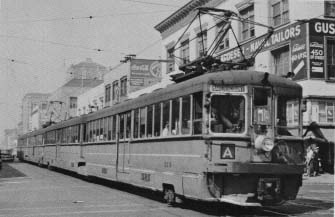
|
Open
Forum. Also has picture of the concrete design (not as strong
or long-lasting as steel) pushed by Caltrans.
Bay Link: High
speed rail from Los Angeles, Capitol trains from Sacramento,
possibly other interurban lines terminating at the Transbay
Terminal.
San Francisco Union
Station: How to revitalize the Transbay Terminal area into a
vibrant commercial project based around this major transportation
hub.
MTC's
Bay Bridge Design Task Force
